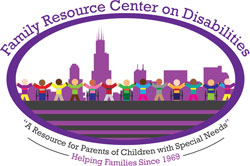IDEA—the Individuals with Disabilities Education Act
The Individuals with Disabilities Education Act (IDEA) is a law ensuring services to children with disabilities throughout the nation. IDEA governs how states and public agencies provide early intervention, special education and related services to more than 6.5 million eligible infants, toddlers, children and youth with disabilities.
Infants and toddlers with disabilities (birth-2) and their families receive early intervention services under IDEA Part C. Children and youth (ages 3-21) receive special education and related services under IDEA Part B.
The most recent amendments were passed by Congress in December 2004, with final regulations published in August 2006 (Part B for school-aged children) and in September 2011 (Part C, for babies and toddlers).
Part C of IDEA Early Intervention for babies and toddlers
Early intervention is a system of services that helps babies and toddlers with developmental delays or disabilities. Early intervention focuses on helping eligible babies and toddlers learn the basic and brand-new skills that typically develop during the first three years of life, such as:
- Physical (reaching, rolling, crawling, and walking)
- Cognitive (thinking, learning, solving problems)
- Communication (talking, listening, understanding)
- Social/emotional (playing, feeling secure and happy)
- Self-help (eating, dressing)
Authorized by law
Early intervention is available in every state and territory of the United States. The Individuals with Disabilities Education Act (IDEA) requires it–Part C of IDEA, to be precise. That’s why you’ll sometimes hear early intervention referred to as Part C. Under IDEA Part C, infants and toddlers with disabilities (birth-3) and their families receive early intervention services. Read IDEA’s verbatim language regarding Part C.
Part B of IDEA Services for School Age Children
Since the enactment of the original legislation in 1975, children and youth (ages 3-22) receive special education and related services. For school-aged children with disabilities (including preschoolers), Part B is the foundation upon which special education and related services rest. Part B has eight (8) subparts. Read IDEA’s verbatim language regarding Part B.
Part D – National Activities to Improve Education of Children with Disabilities
Part D focuses on the need to improve special education programs, preparing personnel, disseminating information, supporting research, and applying research findings to education. Part D is called “National Activities to Improve Education of Children with Disabilities” and includes two subparts. Subpart One is “State Program Improvement Grants for Children with Disabilities.” Subpart Two is “Coordinated Research, Personnel Preparation, Technical Assistance, Support, and Dissemination of Information. Information take from Wright’s Law “Overview of IDEA Chapter 4” http://www.wrightslaw.com/bks/lawbk/ch4.idea.overview.pdf
Read IDEA’s verbatim language
IDEA’s statute, as passed by Congress
Federal regulations for Part B of IDEA
Federal regulations for Part C of IDEA
Guidance on IDEA from the U.S. Department of Education
The Office of Special Education Programs (OSEP) at the U.S. Department of Education regularly provides guidance to the field on IDEA. All are intended to clarify elements of the law and its regulations, and are an important part of understanding IDEA and how to implement it. To connect with this federal guidance, visit:
Where OSEP/DOE Posts Its Guidance on IDEA
OSEP’s Legislation and Policy Guidance
http://www2.ed.gov/about/offices/list/osers/osep/policy.html
OSEP Policy Correspondence
http://www2.ed.gov/policy/speced/guid/idea/letters/revpolicy/index.html
Bullying | Keeping Students with Disabilities Safe from Bullying
Dear Colleague letter, with enclosure
https://sites.ed.gov/idea/files/bullyingdcl-8-20-13.pdf
Discipline Procedures
An informal Q&A, January 2007
http://idea.ed.gov/explore/view/p/%2Croot%2Cdynamic%2CQaCorner%2C7%2C
Disproportionality
An informal Q&A on how states and LEAs can take steps to address disproportionate representation of racial/ethnic groups in special education, June 2009
http://idea.ed.gov/explore/view/p/%2Croot%2Cdynamic%2CQaCorner%2C9%2C
Dispute Resolution Procedures under Part B
A Q&A document, July 23, 2013
https://sites.ed.gov/idea/files/07-0006.HQT_.pdf
Early Intervening Services
Memorandum to the Chief State School Officers and the State Directors of Special Education, July 28, 2008
http://www.ed.gov/policy/speced/guid/idea/ceis.html
Highly Qualified Teachers (HQT) Serving Children with Disabilities
An informal Q&A, January 2007
http://idea.ed.gov/explore/view/p/%2Croot%2Cdynamic%2CQaCorner%2C2%2C
Homeless Children with Disabilities
Policy Guidance under Executive Order #13422, February 2008
https://sites.ed.gov/idea/idea-files/guidance-homeless-children-with-disabilities/
IEPs
An informal Q&A, June 2010
http://idea.ed.gov/explore/view/p/%2Croot%2Cdynamic%2CQaCorner%2C14%2C
IEPs, Evaluations, and Reevaluations
An informal Q&A, updated June 2010
http://idea.ed.gov/explore/view/p/%2Croot%2Cdynamic%2CQaCorner%2C3%2C
Modified Academic Achievement Standards
Non-regulatory guidance, July 2007
http://www.ed.gov/policy/speced/guid/modachieve-summary.html
Monitoring, Technical Assistance, and Enforcement
An informal Q&A, January 2007
http://idea.ed.gov/explore/view/p/%2Croot%2Cdynamic%2CQaCorner%2C4%2C
NIMAS (National Instructional Materials Accessibility Standards)
An informal Q&A, revised August 2010
https://www2.ed.gov/policy/speced/guid/idea/nimas-qa.pdf
Parental Consent for the Use of Public Benefits or Insurance to Pay for Services under IDEA
A non-regulatory Q&A guidance, February 14, 2013
http://www2.ed.gov/policy/speced/reg/idea/part-b/idea-part-b-parental-consent–qa.pdf
Procedural Safeguards and Due Process Procedures for Parents and Children with Disabilities
An informal Q&A, January 2007
http://idea.ed.gov/explore/view/p/%2Croot%2Cdynamic%2CQaCorner%2C6%2C
Procedural Safeguards: Model Form
Updated July 2009
http://idea.ed.gov/static/modelForms
Providing Services to Children with Disabilities During an H1N1 Outbreak
Policy guidance, December 2009
http://www2.ed.gov/policy/speced/guid/idea/h1n1-idea-qa.pdf
RTI and Early Intervening Services (EIS)
An informal Q&A, January 2007
http://idea.ed.gov/explore/view/p/%2Croot%2Cdynamic%2CQaCorner%2C8%2C
School Discipline and Climate Guidance Package
From DOE, a dear colleague letter, principles, compendium of school discipline laws and regulations, directory of available federal technical assistance, and more. January 8, 2014.
http://www2.ed.gov/policy/gen/guid/school-discipline/index.html
Serving Children with Disabilities Placed by Their Parents at Private Schools
An informal Q&A, January 2007
http://idea.ed.gov/explore/view/p/%2Croot%2Cdynamic%2CQaCorner%2C1%2C
Transportation
An informal Q&A on IDEA’s requirements for serving children with disabilities eligible for transportation, November 2009.
http://idea.ed.gov/explore/view/p/%2Croot%2Cdynamic%2CQaCorner%2C12%2C
Waiving Maintenance of Effort
This guidance is called “Process and Criteria Used to Evaluate a Request by States to Waive Maintenance of Effort (MOE) Requirements under Part B of the Individuals with Disabilities Education Act (IDEA).” Issued in June 2010.
http://www2.ed.gov/policy/speced/guid/idea/moe-waivers.pdf
Information taken from the Center for Parent Information and Resources Newark, NJ, Author Updated, March 2014 A legacy resource from NICHCY
